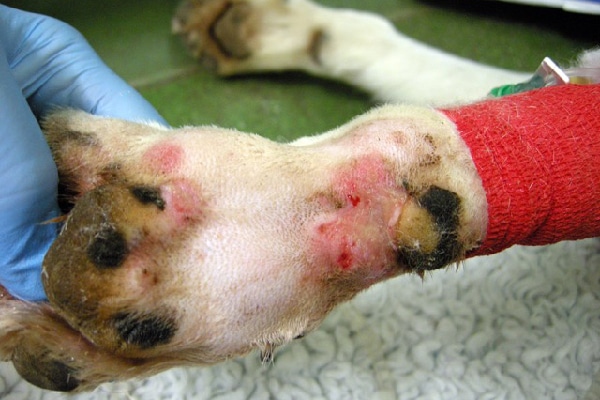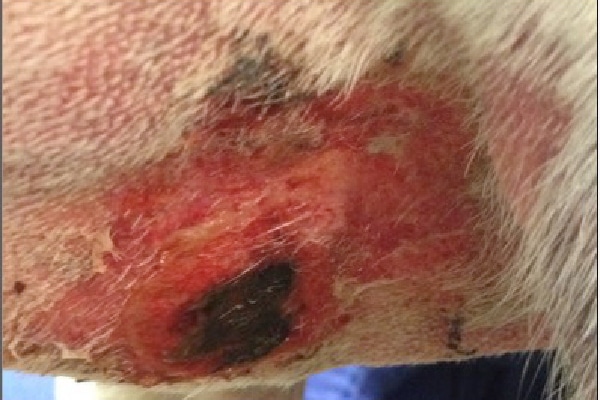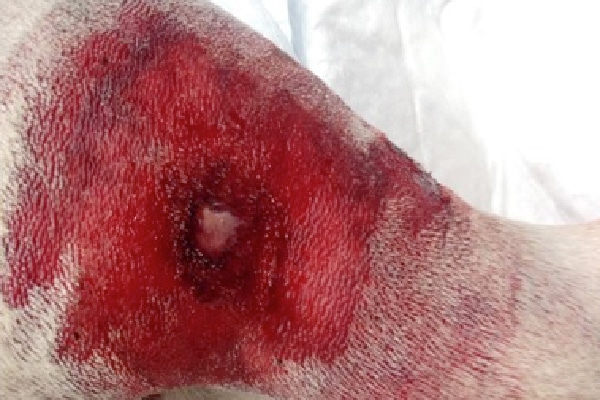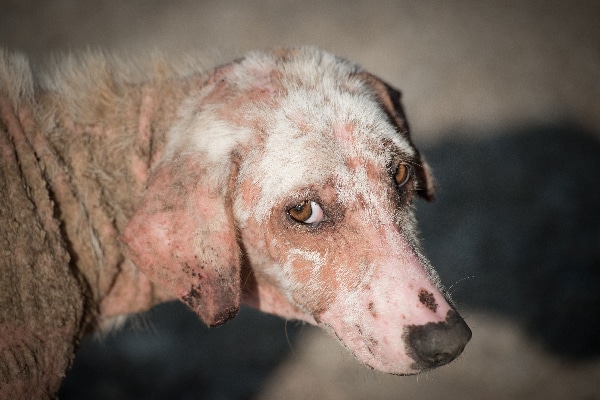In the mid-1980s, a troubling and mysterious disease struck racing Greyhounds at tracks in Alabama. It was officially known as cutaneous and renal glomerular vasculopathy (CRGV), but nicknamed Alabama rot. Although Alabama rot in dogs is no longer a big concern in the United States, in recent years the disease has emerged in the United Kingdom. Interestingly, it has not been connected to Greyhounds the way it was in the United States — it can affect any breed of dog.

Warning: the photos below are graphic but real representations of Alabama rot in dogs.
What are the stats on Alabama rot in dogs?

“In total, the U.K. has now seen 166 confirmed cases across 38 counties since 2012, with 43 cases so far in 2018,” says David Walker, BVetMed(Hons), DipACVIM, DipECVIM-CA, MRCVS, an American and European Specialist in Small Animal Internal Medicine with Anderson Moores Veterinary Specialists in Winchester, Hampshire. “At this stage, we cannot confirm that the disease we are seeing in the U.K. is definitely exactly the same. However, given the similarities, the term Alabama rot has often been used in the U.K.”
What exactly is Alabama rot in dogs?
The disease causes damage to the blood vessels of the skin and kidneys, leading to tissue death. The outward signs of the disease are oozing skin sores, followed later by kidney failure.
What are the signs of Alabama rot in dogs?

“The first sign of the disease that is normally seen is a skin sore that isn’t caused by a known injury,” Dr. Walker explains. “Most commonly, these sores are found on the lower half of the leg and appear as a patch of red skin and are often open and ulcer-like. Then, an average of three days later (with a timespan of one to 10 days), dogs may develop signs of kidney failure (not eating, vomiting, tired).”
What causes Alabama rot in dogs?
The cause of Alabama rot, both in the United States in the ’80s and in the U.K. currently, remains unknown. “Research is ongoing,” Dr. Walker says. “One piece of work is currently being carried out in association with the epidemiology team at the Royal Veterinary College and is examining geographical patterns, as well as environmental and climatic risk factors. An obvious pattern that we can see is linked to seasons, with the vast majority of cases occurring between November and March, with limited cases over the summer. However, there are probably other factors as well.”
Is Alabama rot a concern for your dog?

Because Alabama rot is a serious disease, dog owners living in the UK are understandably concerned. However, Dr. Walker says the increase in cases might be partially due to a higher awareness and understanding of the disease in recent years. “Alabama Rot is still very rare, so we’re advising dog owners to remain calm but vigilant and [to] seek advice from their local vet if their dog develops unexplained skin lesions,” Dr. Walker advises.
So, will Alabama rot make its way back to the States? “We are not aware of recent reports of Alabama rot in the U.S.A. and we are not aware of any organizations recording/reporting cases,” Dr. Walker says.

Can you prevent Alabama rot in dogs?
Since the cause is still unknown, there isn’t much owners can really do to prevent the disease. However, because it’s possible that there might be an environmental trigger, some people have suggested washing dogs off after a muddy walk.
“On the basis of our current understanding of the disease, the best advice we can give to pet owners is to be vigilant,” Dr. Walker says. “If they see an unexplained skin sore/lesion then they should go and visit their local vet.”








